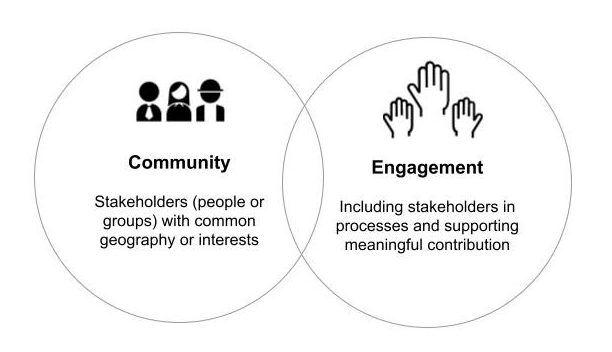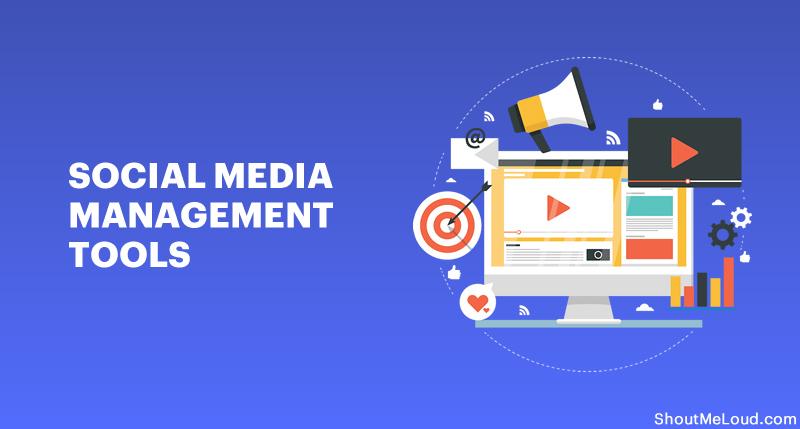Unlock the potential of your brand with effective social media management! It’s not just about posting; it’s about building relationships, engaging audiences, and crafting a compelling narrative. Transform your online presence and inspire loyalty—start your journey today!
What is Social Media Management? Your Ultimate Guide
In today’s digital landscape, social media has transcended from being a mere communication tool to a powerful engine that drives engagement, builds brands, and cultivates communities. With billions of users worldwide, the potential to connect with your audience is unparalleled. But how do you harness this potential effectively? Enter social media management—a strategic approach that transforms chaotic likes and shares into cohesive narratives and impactful interactions.
In this ultimate guide, we will explore the intricacies of social media management, revealing not just what it is, but how it can revolutionize your brand’s online presence. Whether you’re a small business owner eager to connect with your customers or a seasoned marketer looking to refine your strategies, understanding the art and science of social media management can unlock doors to new opportunities. Prepare to be inspired as we dive deep into the essential practices, tools, and insights that will empower you to master the social media realm and turn your vision into reality. Your journey to social media success starts here!
Understanding the Essence of Social Media Management
Social media management is more than just posting updates on platforms like Facebook, Instagram, or Twitter. It’s an intricate blend of strategy, creativity, and analytics that drives brand engagement and fosters community. At its core, effective social media management involves understanding your audience and crafting messages that resonate with them. It’s about building relationships, not just broadcasting content.
To navigate the dynamic landscape of social media, one must embrace several key components:
- Content Creation: Developing captivating and relevant content tailored to your audience’s interests. This can include images, videos, articles, and infographics that reflect your brand’s voice and values.
- Engagement: Actively communicating with your audience through comments, messages, and discussions. This two-way interaction enhances loyalty and builds a sense of community.
- Analytics: Monitoring performance metrics to understand what works and what doesn’t. By analyzing engagement rates, reach, and conversion, you can refine your strategy for optimal results.
- Scheduling: Planning your posts in advance to ensure consistency and timely delivery. Utilizing scheduling tools can help maintain a steady online presence, even during off-hours.
Moreover, understanding the nuances of each platform is crucial. Different channels serve distinct audiences and require tailored strategies. For instance:
| Platform | Best for | Content Type |
|---|---|---|
| Visual storytelling | Images, Stories, Reels | |
| Professional networking | Articles, Case studies, Job postings | |
| Real-time updates | Short posts, Polls, News |
Furthermore, establishing a cohesive brand identity across all platforms strengthens recognition and trust. This includes consistent visuals, tone, and messaging that reflect your brand’s ethos. When your audience can easily identify your brand amid the noise of social media, they are more likely to engage and convert.
Lastly, staying updated on trends and emerging tools is vital in this fast-paced digital environment. By leveraging new features and technologies, you can keep your strategy fresh and relevant, ensuring you continue to meet the evolving needs of your audience. Social media management is not just a task; it is an ongoing journey of learning, adapting, and thriving in a digital-first world.
The Benefits of Effective Social Media Management
In today’s digital landscape, effective social media management is not just an option; it’s a necessity for businesses aiming to thrive. By strategically engaging with your audience, you can foster brand loyalty, drive traffic, and even increase sales. Here are some compelling benefits that highlight the importance of effective social media management.
- Enhanced Brand Awareness: Consistent and engaging content across social platforms significantly boosts your brand visibility. The more your audience sees your brand, the more likely they are to remember it.
- Increased Customer Insights: Social media offers a wealth of data on customer preferences and behaviors. By analyzing this data, businesses can tailor their strategies to better meet the needs of their audience.
- Improved Customer Relationships: Social media allows for real-time interaction with customers. Addressing inquiries, responding to feedback, and engaging in conversations cultivates a sense of community and trust.
- Cost-Effective Marketing: Compared to traditional marketing methods, social media offers a more affordable avenue for reaching potential customers. Many platforms allow for targeted advertising that maximizes your marketing budget.
- Increased Website Traffic: Sharing content that links back to your website drives more visitors. Social media posts can serve as a powerful tool to funnel traffic to your site, potentially leading to increased conversions.
Moreover, staying active and consistent on social media builds authority in your industry. When your audience sees you sharing valuable content regularly, they are more likely to view you as an expert, leading to greater credibility and influence in your niche.
Utilizing effective social media management can also enhance your competitive edge. By continuously monitoring trends, engaging with your audience, and analyzing your performance, you can adapt and respond to changes in your industry faster than your competitors.
| Benefit | Description |
|---|---|
| Brand Loyalty | Engagement fosters a personal connection, driving repeat business. |
| Content Performance | Real-time analytics allow for immediate adjustments to content strategies. |
| Audience Reach | Leveraging multiple platforms maximizes exposure to diverse demographics. |
Ultimately, extend beyond mere numbers; they create meaningful relationships that translate into long-term success. By investing time and resources into your social media strategy, you’re setting the foundation for sustained growth and influence in an ever-evolving digital world.
Key Components of a Winning Social Media Strategy
To carve a niche in the bustling world of social media, there are several key components that can propel your strategy from mediocre to outstanding. Each element plays a crucial role in ensuring that you not only engage your audience but also achieve your business objectives.
First and foremost, understanding your target audience is essential. This includes identifying their demographics, interests, and behaviors, which will guide the content you create. Here are a few ways to get to know your audience better:
- Conduct surveys to gather direct feedback.
- Analyze social media insights for demographic information.
- Monitor competitors to see who engages with their content.
Next, creating compelling content is vital. Your posts should not only inform but also inspire and entertain. Consider varying your formats to keep your audience engaged:
- Videos that tell stories or demonstrate products.
- Infographics that condense complex information into digestible visuals.
- Live streams that foster real-time interaction.
Another cornerstone of a successful strategy is consistent branding. Your brand’s voice, visuals, and messaging should resonate across all platforms. This consistency builds familiarity and trust with your audience. Consider maintaining:
- Brand colors and logos in all graphics.
- A unique tone that reflects your brand’s personality.
- Regular posting schedules to keep your audience anticipating your content.
measuring success is indispensable for refining your strategy. Use analytic tools to track performance and adjust your tactics based on data. Here’s a quick reference table:
| Metric | Purpose |
|---|---|
| Engagement Rate | Measures how well your content resonates with your audience. |
| Follower Growth | Indicates the expansion of your reach and brand awareness. |
| Conversion Rate | Tracks the success of your campaigns in generating leads or sales. |
By weaving these components into your social media management strategy, you can create a dynamic online presence that not only attracts but also retains followers. Remember, a winning strategy is not static; it evolves with your audience and the ever-changing digital landscape.

Choosing the Right Platforms for Your Brand
In today’s digital landscape, selecting the right platforms for your brand is pivotal to maximizing your social media management efforts. Each platform offers unique features, audiences, and engagement styles. By understanding these nuances, you can tailor your content to resonate with your target demographic effectively.
Consider the following factors when choosing your brand’s platforms:
- Target Audience: Identify where your audience spends their time. Different age groups, interests, and demographics gravitate towards specific platforms.
- Content Type: Determine what type of content you excel at—whether it’s visually appealing images, engaging videos, or written narratives—and find the platforms that best support those formats.
- Engagement Style: Consider whether you prefer a conversational approach or more polished presentations. Platforms like Instagram thrive on visuals, while Twitter favors succinct messaging.
To help you streamline your decision-making process, here’s a simple comparison table highlighting key characteristics of popular platforms:
| Platform | Best For | Key Features |
|---|---|---|
| Community Engagement | Groups, Events, Live Videos | |
| Visual Storytelling | Stories, Reels, IGTV | |
| Real-time Updates | Threads, Polls, Hashtags | |
| Professional Networking | Articles, Networking, Job Posts |
Your choice of platforms should align with your brand’s goals and capabilities. For instance, if your objective is to foster community and build loyal relationships, Facebook and Instagram might be ideal for engagement. Conversely, if you aim to establish thought leadership in your industry, LinkedIn could be the right fit.
Lastly, keep in mind that it’s not always necessary to be present on every platform. Focus on a few that best align with your brand identity and invest time in cultivating a robust presence. This targeted approach not only enhances the quality of your content but also builds a more engaged and loyal audience.

Crafting Engaging Content That Resonates
In the ever-evolving landscape of social media, creating content that captivates and inspires is essential for standing out in the crowded digital space. Engaging content not only attracts attention but also fosters a deeper connection with your audience. To achieve this, consider the following strategies:
- Know Your Audience: Understanding the preferences, interests, and pain points of your audience is crucial. Conduct surveys, engage in conversations, and analyze feedback to tailor your content to their needs.
- Tell Compelling Stories: People are naturally drawn to stories. Share authentic experiences and narratives that resonate with your audience, creating an emotional bond and inviting them to participate in the discussion.
- Utilize Visuals Wisely: Incorporate eye-catching images, infographics, and videos to break up text and enhance understanding. Visual content is more likely to be shared and remembered.
- Encourage Interaction: Invite your audience to engage with your content through polls, comments, and questions. This not only increases engagement but also provides valuable insights into their preferences.
Moreover, consistency is key in building trust and recognition. Develop a content calendar that aligns with your brand voice and posting frequency. This ensures that your audience can anticipate your content, fostering loyalty and a community of followers.
To illustrate effective content strategies, consider the following table that showcases various types of posts and their engagement metrics:
| Content Type | Engagement Rate | Best Platforms |
|---|---|---|
| Video Content | 75% | Instagram, Facebook |
| Infographics | 65% | Pinterest, LinkedIn |
| Blog Posts | 50% | Website, Facebook |
| Polls & Surveys | 80% | Twitter, Instagram Stories |
Ultimately, the goal of social media management is to create a community around your brand. By focusing on authentic, engaging content that resonates with your audience, you can build lasting relationships that translate into loyalty and advocacy. Remember, your audience is not just looking for information; they seek connection, inspiration, and value.
As you embark on your content creation journey, keep experimenting and analyzing what works best for your brand. The landscape of social media is dynamic, and the most successful brands are those that adapt and evolve with their audience’s needs and desires.
Building a Consistent Brand Voice Across Channels
Establishing a unified brand voice is crucial for any organization that wants to resonate with its audience across various platforms. When your brand speaks in a consistent tone, it creates a sense of familiarity and trust, which is essential in today’s competitive landscape. A cohesive voice enhances your identity, allowing your audience to recognize your brand instantly, whether they’re scrolling through their social media feeds or browsing your website.
To achieve this consistency, consider the following key elements:
- Audience Understanding: Know your audience inside and out. What are their interests, pain points, and preferences? Tailoring your voice to meet the needs of your audience will foster a stronger connection.
- Core Values: Identify the core values that your brand stands for. These values should permeate every piece of content you create, ensuring that your voice reflects what your brand believes in.
- Style Guide: Develop a comprehensive style guide that outlines your brand’s tone, language, and key messaging. This guide should serve as a reference for everyone involved in content creation.
Consistency doesn’t only apply to the tone; it should extend to visual elements as well. Your color palette, typography, and imagery should align with your voice and reinforce your brand identity. For instance, if your brand voice is friendly and approachable, use warm colors and casual language. On the other hand, a more professional and authoritative voice may require a cleaner design and formal language.
Another vital aspect is the platform-specific adaptation of your voice. While maintaining your core brand identity, it’s essential to tailor your messaging according to the platform you are using. For example, the tone on Twitter might be quippy and concise, while your LinkedIn posts could take on a more authoritative and informative tone. Finding the right balance ensures that you engage effectively with your audience, irrespective of where they encounter your brand.
| Platform | Recommended Tone | Content Style |
|---|---|---|
| Friendly, Engaging | Images, Stories, Polls | |
| Concise, Witty | Threads, Quick Updates | |
| Visual, Inspirational | High-quality Images, Reels | |
| Professional, Informative | Articles, Case Studies |
remember that building a consistent brand voice is an ongoing process. Regularly review your content and audience feedback to ensure that your messaging continues to resonate. Adapt your strategy as needed, but always stay true to the core principles that define your brand. By creating a harmonious brand voice across all channels, you not only strengthen your brand’s identity but also build a loyal community around your values and mission.

Analyzing Metrics to Measure Success
In the dynamic world of social media management, understanding your performance is crucial. Metrics provide invaluable insights that reveal how well your strategies are working and where adjustments are needed. By analyzing key performance indicators (KPIs), you can fine-tune your approach to maximize engagement and growth.
Some essential metrics to track include:
- Engagement Rate: This measures how actively your audience interacts with your content.
- Reach: Understanding how many unique users view your content is vital for assessing visibility.
- Click-Through Rate (CTR): This indicates the effectiveness of your calls to action.
- Follower Growth Rate: Keeping an eye on how quickly your audience is expanding helps gauge brand popularity.
- Conversion Rate: Ultimately, this metric reveals how well your social media activities translate into desired actions, such as sales or sign-ups.
To visualize these metrics, consider employing a dashboard tool that consolidates data from various platforms. This can streamline your analysis and provide a comprehensive overview of your performance. Below is an example of how to present your findings:
| Metric | Value | Target | Trend |
|---|---|---|---|
| Engagement Rate | 3.5% | 5% | ⬇️ |
| Reach | 10,000 | 12,000 | ➡️ |
| CTR | 2% | 3% | ⬇️ |
| Follower Growth Rate | 250/month | 300/month | ➡️ |
| Conversion Rate | 1.5% | 2% | ⬇️ |
Regularly reviewing these metrics allows you to identify trends and respond proactively. Are your engagement rates declining? It might be time to experiment with new content types or posting times. Conversely, if you see a surge in follower growth, analyze what triggered this spike and find ways to replicate that success.
Ultimately, the goal is to craft a strategy that not only attracts attention but also builds a loyal community. By focusing on the right metrics, you can create content that resonates with your audience, resulting in lasting connections and increased brand loyalty.

Harnessing the Power of Community Engagement
In the digital age, community engagement has emerged as one of the most powerful tools for brands and businesses to foster deeper connections with their audiences. Social media platforms serve as vibrant ecosystems where individuals come together, share experiences, and build relationships. Leveraging this dynamic can turn a simple marketing strategy into a thriving community of loyal customers and advocates.
To truly harness the potential of community engagement, consider the following strategies:
- Authenticity: Be genuine in your interactions. Audiences are drawn to brands that showcase their true selves, fostering trust and loyalty.
- Active Listening: Monitor conversations and feedback. Responding promptly demonstrates that you value your community’s opinions and contributions.
- Content Co-Creation: Encourage your followers to participate in the content creation process. This not only boosts engagement but also makes your audience feel valued.
- Exclusive Access: Offer community members exclusive content or early access to new products. This incentivizes participation and strengthens their connection to your brand.
Building a community is not just about broadcasting your message but engaging in meaningful conversations. Use social media platforms to create interactive experiences that invite participation. Polls, Q&A sessions, and live events can transform passive followers into active community members. By creating these touchpoints, you foster a sense of belonging that can lead to increased brand loyalty.
Consider the impact of creating a dedicated space for your community, such as a Facebook group or a forum on your website. Here, members can share ideas, ask questions, and support each other. This not only enhances engagement but also positions your brand as a facilitator of valuable connections.
| Engagement Technique | Benefit |
|---|---|
| Surveys & Polls | Direct feedback drives improvement. |
| User-Generated Content | Boosts authenticity and trust. |
| Live Interactions | Real-time connection enhances loyalty. |
| Member Spotlights | Builds community and recognition. |
Ultimately, community engagement is a two-way street that requires effort and dedication. By actively nurturing your community, you not only promote your brand but also create a supportive network that thrives on shared values and collaboration. Embrace this opportunity to elevate your social media management strategy, and witness how a strong community can lead to remarkable growth and success.

Navigating Crisis Management on Social Media
In today’s digital landscape, crises can erupt without warning, making effective crisis management on social media more critical than ever. Brands must be prepared not just to react but to respond strategically. A well-crafted approach to crisis management can not only mitigate damage but also strengthen your brand’s reputation in the long run.
Start by establishing a crisis communication plan. This plan should include:
- Clear communication channels: Define which platforms will be used for updates.
- Designated spokespersons: Identify team members who will communicate with the public.
- Response timelines: Set expectations for how quickly responses will be issued.
Being proactive is essential. Regularly monitor social media channels for potential issues, and engage with your audience even during calm periods. This will help build trust, ensuring that your followers are more likely to believe in your transparency when a crisis does arise.
In the heat of a crisis, your response should be timely and thoughtful. Here are some key steps to take:
- Assess the situation: Gather all the facts before making any public statements.
- Communicate promptly: Acknowledge the issue quickly to show that you are aware and taking it seriously.
- Provide updates: Keep your audience informed as new information becomes available.
Consider creating a crisis response team that can be mobilized at a moment’s notice. This team should have clear roles and responsibilities, ensuring a unified front in your messaging. A simple table can help outline these roles:
| Team Member | Role | Responsibility |
|---|---|---|
| Social Media Manager | Monitor Platforms | Track mentions and engage with users. |
| PR Specialist | Craft Statements | Prepare official responses and press releases. |
| Legal Advisor | Review Content | Ensure compliance and mitigate legal risks. |
After the crisis subsides, it’s crucial to evaluate the situation. Conduct a post-crisis analysis to understand what worked and what didn’t. Use this information to refine your crisis management strategy, ensuring that your brand emerges stronger and more resilient.
Remember, every crisis presents an opportunity for growth. By mastering social media crisis management, you can not only protect your brand but also build deeper connections with your audience, demonstrating your commitment to transparency and accountability.

Leveraging Influencer Collaborations for Growth
In today’s digital landscape, collaborating with influencers can be a game-changer for businesses aiming to expand their reach and enhance brand visibility. Influencers are not just trendsetters; they are tastemakers who wield significant power over their followers’ purchasing decisions. By leveraging their credibility and the trust they have built with their audience, brands can create authentic connections that traditional marketing often struggles to achieve.
Here are some compelling reasons to consider influencer collaborations:
- Enhanced Credibility: Partnering with an influencer who aligns with your brand values can enhance your company’s credibility. Their endorsement serves as a social proof, making potential customers more likely to trust your products or services.
- Targeted Reach: Influencers often have a niche audience. Collaborating with the right influencers allows brands to reach their target demographic more effectively, ensuring that marketing efforts resonate with the right people.
- Creative Content Creation: Influencers are skilled content creators. They can produce engaging and relatable content that showcases your brand in a way that feels organic, rather than forced advertising.
- Increased Engagement: Posts featuring influencers generally see higher levels of interaction, including likes, shares, and comments. This engagement can significantly amplify your brand’s visibility on social media platforms.
To maximize the impact of influencer collaborations, it’s crucial to choose the right partners. Consider the following factors when selecting influencers:
| Factor | Importance |
|---|---|
| Relevance | Ensure the influencer’s niche aligns with your brand. |
| Engagement Rate | Look beyond follower count; focus on how actively their audience engages. |
| Authenticity | Choose influencers who genuinely resonate with your brand values. |
| Content Style | Ensure their content style aligns with your brand’s aesthetic. |
Once you’ve identified potential influencers, consider the following strategies for a successful collaboration:
- Define Clear Goals: Establish what you want to achieve through the collaboration, whether it’s brand awareness, increased sales, or follower growth.
- Foster Open Communication: Maintain a dialogue with the influencer throughout the partnership to ensure alignment and to share feedback.
- Offer Creative Freedom: Allow influencers to express your brand in their unique style. This authenticity will resonate better with their audience.
- Track Performance: Measure the success of the collaboration through analytics to understand its impact and refine future strategies.
By harnessing the power of influencer collaborations, brands can tap into new markets and foster lasting relationships with their audience. In an era where digital interactions shape consumer behavior, this strategy is not just beneficial; it’s essential for sustained growth and success.

Staying Ahead of Trends: The Future of Social Media
As we look to the horizon of social media, it’s clear that staying ahead of trends is not just beneficial; it’s essential. The digital landscape is ever-evolving, and those who adapt quickly will reap the rewards. Here are some of the key trends shaping the future of social media management:
- Video Content Dominance: Short-form videos are taking center stage. Platforms like TikTok and Instagram Reels are proving that engagement skyrockets with eye-catching, bite-sized content. Brands that invest in video production can tell compelling stories that resonate with their audience.
- Increased Personalization: Users crave authentic experiences. By leveraging data analytics, social media managers can curate personalized content that meets the unique preferences of their audience, leading to higher engagement and loyalty.
- Social Commerce Growth: The merging of e-commerce and social media is becoming more pronounced. Brands are integrating shopping features directly into their social platforms, allowing users to discover and purchase products seamlessly.
- Focus on Community Building: Instead of just broadcasting messages, successful brands are fostering relationships. Building online communities helps brands create a loyal customer base that advocates for their products.
- AI and Automation: The use of artificial intelligence in social media management is on the rise. AI tools can help automate responses, analyze trends, and even generate content, making social media strategies more efficient and effective.
The shift towards these trends underscores the importance of being proactive rather than reactive. Brands that anticipate changes in user preferences and platform algorithms will not only survive but thrive in a competitive environment. To facilitate this, maintaining an agile social media strategy is critical.
| Trend | Impact | Actionable Strategy |
|---|---|---|
| Video Content | Higher Engagement | Invest in short-form videos |
| Personalization | Increased Loyalty | Utilize data analytics |
| Social Commerce | Boosted Sales | Integrate shopping features |
| Community Building | Brand Advocacy | Create and nurture online communities |
| AI Automation | Enhanced Efficiency | Employ AI tools for analysis and content |
To truly leverage the power of social media, organizations need to embrace these trends with enthusiasm. By implementing innovative strategies and keeping the dialogue open with their audience, brands will not only stay relevant but also inspire the next generation of social media interactions.

Essential Tools for Streamlined Management
In the fast-paced world of social media, having the right tools at your fingertips can make all the difference. These essential resources not only enhance productivity but also enable you to manage your online presence with greater efficiency. Here are some indispensable tools that every social media manager should consider:
- Scheduling Tools: Tools like Hootsuite, Buffer, and Sprout Social allow you to plan and schedule your posts in advance. This enables consistent posting, even when you’re busy.
- Analytics Platforms: Utilizing platforms such as Google Analytics and Facebook Insights helps you track engagement metrics, giving you valuable insights into your audience’s behavior.
- Content Creation Tools: Canva and Adobe Spark are fantastic for designing eye-catching graphics and videos that can elevate your content and attract more followers.
- Social Listening Tools: Tools like Brandwatch and Mention allow you to monitor conversations about your brand, so you can engage with your audience and manage your reputation effectively.
- Collaboration Tools: Whether it’s Trello or Asana, these platforms facilitate seamless teamwork, making it easier to coordinate campaigns and track project progress.
Additionally, leveraging the power of automation can significantly reduce manual tasks. Automation tools such as Zapier can connect various apps and automate repetitive tasks, freeing up your time to focus on strategy and creativity. Integrating these tools into your workflow not only enhances efficiency but also empowers you to make data-driven decisions.
To help you understand the impact of these tools on your management strategy, consider the following table showcasing typical features and benefits:
| Tool Type | Key Features | Benefits |
|---|---|---|
| Scheduling | Auto-posting, Analytics | Consistency, Time-saving |
| Analytics | Engagement Metrics, Audience Insights | Improved Strategy, Targeted Content |
| Content Creation | Templates, Drag-and-drop Interface | Professional Designs, Brand Cohesion |
| Social Listening | Real-time Monitoring, Sentiment Analysis | Enhanced Engagement, Proactive Management |
Ultimately, the right mix of tools will streamline your social media management process, allowing you to focus on what truly matters: engaging and growing your community. Embrace these innovations, and watch your social media strategy transform into a powerful, effective force.

Empowering Your Team for Social Media Success

Taking Action: Implementing Your Social Media Plan
Implementing your social media plan is where creativity meets strategy. To successfully bring your ideas to life, start by setting clear objectives. What do you want to achieve? More followers? Increased engagement? Higher sales? Defining your goals will give your efforts direction and help you measure success effectively.
Next, focus on content creation. Quality over quantity is the mantra here. Develop a content calendar that outlines what you will post and when. This helps streamline your workflow and ensures that you are consistently engaging with your audience. Consider integrating various types of content such as:
- Engaging visuals (images, infographics, videos)
- Informative blog posts and articles
- Interactive polls and questions
- Behind-the-scenes glimpses into your brand
Don’t forget about community engagement. Respond to comments, messages, and mentions promptly. Building relationships with your audience fosters loyalty and encourages word-of-mouth promotion. Consider creating a community guide to streamline your engagement efforts.
| Engagement Activities | Frequency | Platform |
|---|---|---|
| Respond to Comments | Daily | All platforms |
| Live Q&A Sessions | Weekly | Instagram, Facebook |
| Share User-Generated Content | Bi-weekly | Instagram, Twitter |
Analytics play a crucial role in refining your strategy. Utilize tools like Google Analytics and social media insights to track performance metrics. Analyze which posts perform best, the demographics of your audience, and overall engagement rates. This data will help you adjust your approach, ensuring continuous improvement.
Lastly, remember that consistency is key. Regularly posting and engaging with your audience not only boosts visibility but also reinforces your brand’s identity. Stay adaptable and open to feedback; the social media landscape is ever-evolving, and your strategy should evolve with it. Embrace the journey, take bold steps, and watch your social media presence flourish!
Frequently Asked Questions (FAQ)
Q&A: What is Social Media Management? Your Ultimate Guide
Q: What exactly is social media management?
A: Social media management is the process of creating, scheduling, analyzing, and engaging with content posted on social media platforms. It involves crafting a brand’s online presence, fostering community engagement, and driving marketing goals through strategic content creation and interaction. In today’s digital age, effective social media management is essential for building brand awareness, connecting with customers, and driving sales.
Q: Why is social media management important for businesses?
A: Social media management is crucial for businesses because it allows brands to connect with their audience on a personal level. By engaging directly with customers and responding to their needs, businesses can build trust and loyalty. Additionally, a strong social media presence can enhance brand visibility, drive traffic to websites, and ultimately increase sales. In a world where consumers rely heavily on social media for information, businesses that effectively manage their social platforms can set themselves apart from the competition.
Q: What are the key elements of social media management?
A: The key elements of social media management include strategy development, content creation, scheduling, monitoring, engagement, and analytics. A well-crafted strategy outlines goals and objectives, while content creation ensures your posts resonate with your audience. Scheduling helps maintain a consistent posting rhythm, and monitoring allows for real-time adjustments based on audience interaction. Engagement fosters relationships, and analytics provide insights into what’s working and what needs improvement. Together, these elements create a robust social media strategy.
Q: How can I create an effective social media strategy?
A: To create an effective social media strategy, start by defining your goals—whether it’s increasing brand awareness, driving traffic, or generating leads. Next, identify your target audience and understand their preferences. Choose the right platforms that align with your audience, and develop a content calendar that balances promotional, educational, and engaging posts. monitor your results and be willing to adapt your strategy based on performance metrics. Remember, a flexible approach allows for innovation and continuous improvement.
Q: What tools can help with social media management?
A: There are numerous tools available for social media management that can streamline your processes. Platforms like Hootsuite, Buffer, and Sprout Social offer scheduling, monitoring, and analytics features that can save you time and enhance your strategy. Canva can help with creating visually appealing graphics, while Google Analytics provides insights into website traffic driven by social media. By leveraging these tools, you can optimize your efforts and focus on what truly matters—connecting with your audience.
Q: How can I measure the success of my social media efforts?
A: Measuring the success of your social media efforts involves tracking key performance indicators (KPIs) such as engagement rates, follower growth, website traffic from social media, conversion rates, and overall reach. Utilize built-in analytics from social platforms or third-party tools to gather data. Regularly review these metrics to gauge what’s working and what isn’t. The insights gained will empower you to refine your strategy and continue to inspire your audience.
Q: What are some common mistakes to avoid in social media management?
A: Common mistakes in social media management include inconsistency in posting, neglecting audience engagement, focusing solely on promotion without adding value, and failing to analyze performance data. Avoiding these pitfalls involves maintaining a consistent posting schedule, actively engaging with your audience, providing valuable content, and regularly reviewing your analytics to inform your strategy. Remember, social media is about building relationships, not just broadcasting messages.
Q: How can I stay ahead of social media trends?
A: Staying ahead of social media trends requires continual learning and adaptation. Follow industry leaders, subscribe to relevant blogs, and participate in webinars to keep your skills sharp. Engage with your audience to understand their evolving preferences and experiment with new formats like stories, reels, or live videos. By being open to change and willing to innovate, you can ensure your social media strategy remains relevant and impactful.
Q: What’s the bottom line for someone considering social media management?
A: The bottom line is this: social media management is not just a task; it’s an opportunity to connect, engage, and inspire. By investing time and resources into a well-crafted strategy, you can transform your brand’s online presence and unlock unparalleled potential for growth. Embrace the power of social media management, and watch as you build an engaged community that supports your vision and amplifies your success. The journey may require effort, but the rewards are limitless. Start today, and let your brand’s voice be heard!
In Summary
embracing social media management is not just a strategic business move; it’s an essential component in building connections, fostering community, and amplifying your brand’s voice in today’s digital landscape. As we’ve explored in this guide, effective social media management empowers you to engage authentically with your audience, respond to their needs, and cultivate lasting relationships.
In a world where attention spans are fleeting and competition is fierce, the ability to harness the potential of social media can set you apart. Equip yourself with the tools and strategies outlined here, and watch as your online presence transforms into a vibrant hub of interaction and inspiration.
So, take the leap! Embrace the art and science of social media management, and let your brand’s story shine. The possibilities are limitless, and the journey toward growth and connection begins now. Your audience is waiting – are you ready to engage them?





